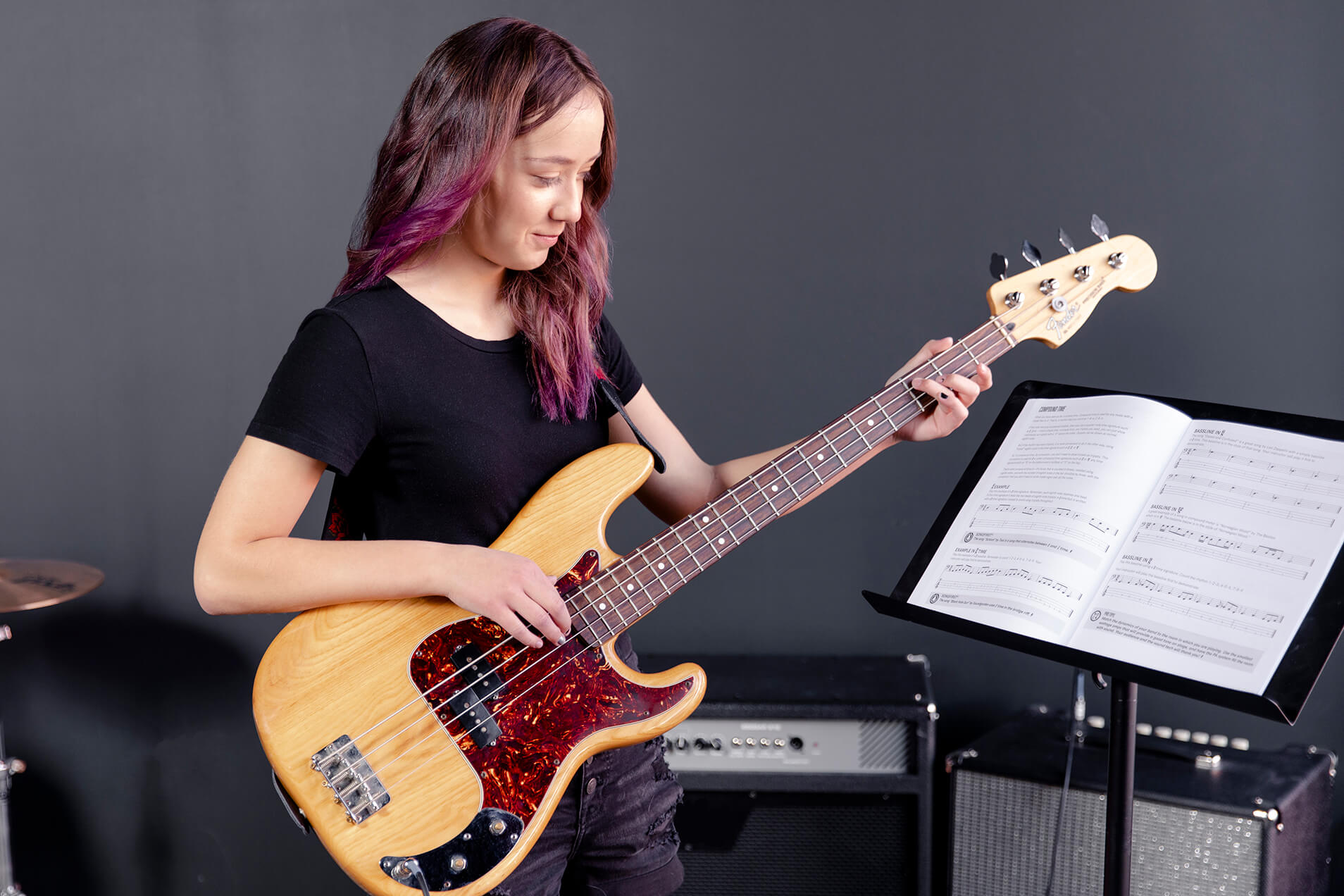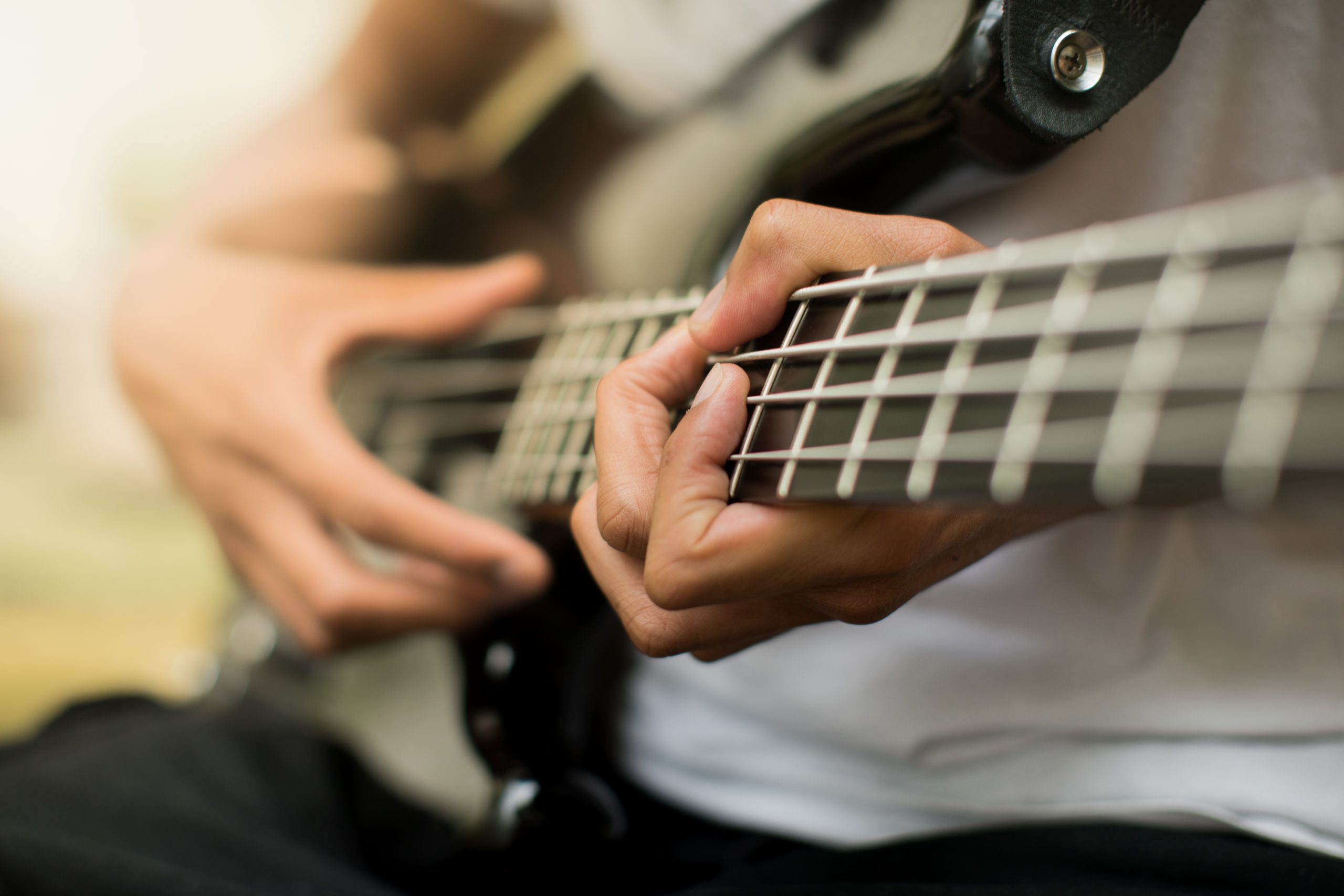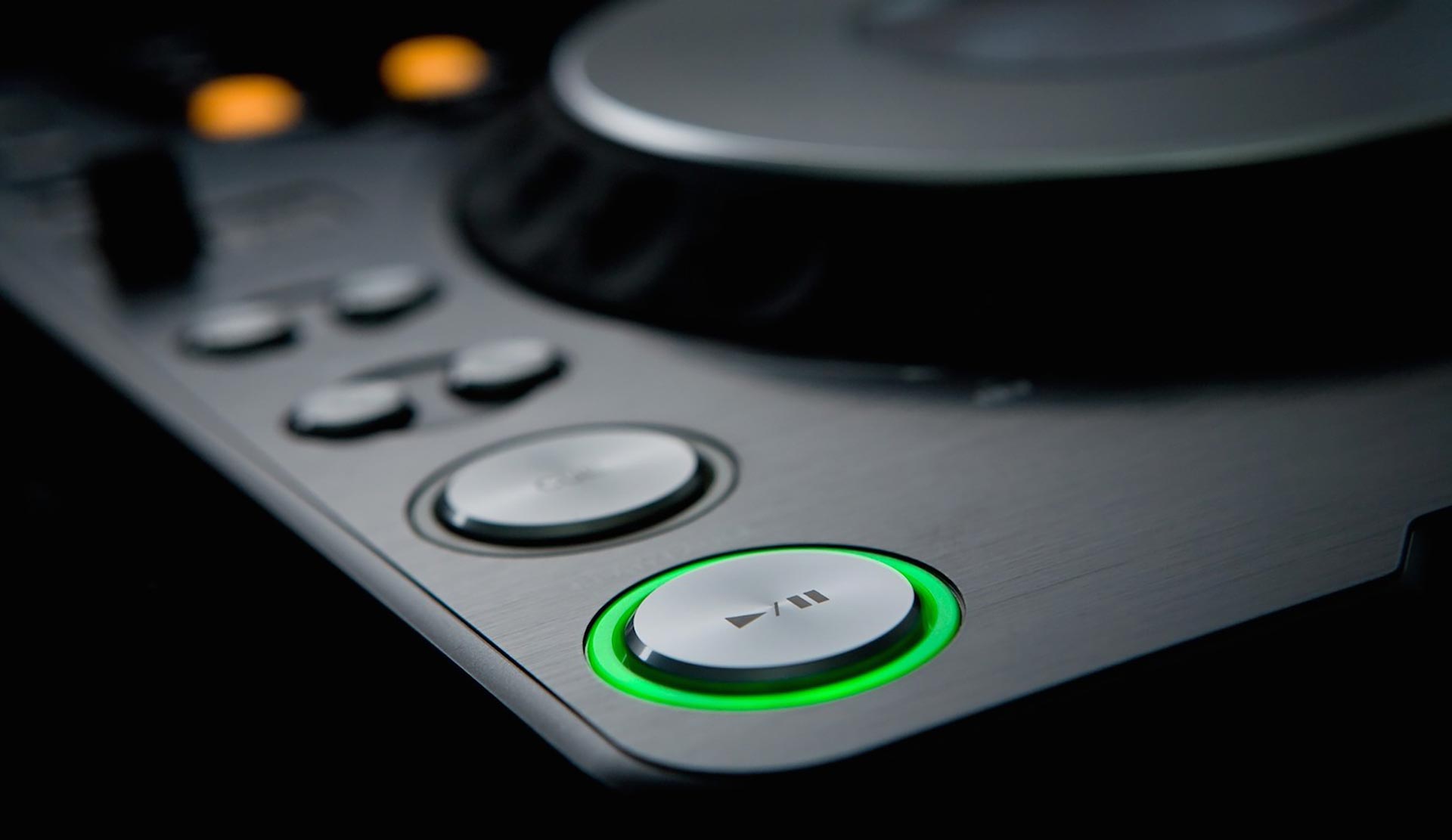Home>Instruments>Bass>How To Play Accordion Bass Buttons


Bass
How To Play Accordion Bass Buttons
Modified: January 22, 2024
Learn how to play the bass buttons on the accordion with step-by-step instructions and helpful tips. Discover the key techniques to enhance your accordion playing skills.
(Many of the links in this article redirect to a specific reviewed product. Your purchase of these products through affiliate links helps to generate commission for AudioLover.com, at no extra cost. Learn more)
Table of Contents
Introduction
When it comes to playing the accordion, the bass buttons are an essential component that adds depth and richness to your music. While the treble side of the accordion produces the melody, the bass side provides the harmonic foundation, giving your songs a full and vibrant sound.
In this article, we will dive into the world of accordion bass buttons and explore how to play them effectively. Whether you are a beginner just starting your accordion journey or an experienced player looking to enhance your bass technique, this guide will provide you with valuable insights and tips.
Understanding the layout and functionality of the bass buttons is the first step in becoming proficient in accordion playing. Typically arranged in rows and columns, the bass buttons correspond to different pitches and produce single notes or chords.
As an accordionist, it is crucial to develop good finger placement on the bass buttons. This allows you to navigate the layout smoothly and generate clean and accurate sounds. We will discuss proper finger placement techniques later in this article.
In addition to learning how to play individual notes, you will also discover techniques for sustaining and muting bass sounds. These techniques give you control over the duration and dynamics of your bass accompaniment, allowing you to bring depth and expression to your music.
To create rhythmic and melodic patterns, you will explore common bass button patterns that can be found in various musical genres. Mastering these patterns will enable you to provide a solid and engaging rhythmic foundation for your accordion playing.
Combining the bass buttons with chords is another skill to develop as an accordion player. This technique adds complexity and richness to your music, allowing you to create more intricate harmonic progressions and sound like a one-person orchestra.
To take your bass playing to the next level, we will discuss adding variations and embellishments to your bass lines. These musical ornaments can make your playing more interesting and expressive, adding your own unique touch to the music.
Like any musical skill, practice is key to mastering accordion bass buttons. We will explore effective practice techniques that will help you develop your bass playing technique, improve your accuracy, and build speed and agility.
By the end of this article, you will have a solid foundation of knowledge and techniques to play accordion bass buttons with confidence and creativity. So let’s dive in and unlock the full potential of your accordion playing!
Understanding the Bass Buttons
In order to effectively play the accordion bass buttons, it is important to have a clear understanding of their layout and functionality. The bass buttons are typically located on the left-hand side of the accordion, opposite the treble keyboard.
The bass buttons are arranged in rows and columns, with each button producing a specific pitch. The rows generally represent different chords, while the columns represent individual notes within those chords. This layout allows you to play both single notes and chords using the bass buttons.
Usually, the outermost row consists of single-note bass buttons, which produce the fundamental notes of the chords. The inner rows contain various chord combinations, such as major, minor, and seventh chords. By pressing multiple buttons simultaneously, you can create rich and harmonically complex bass accompaniments.
It’s important to note that the bass buttons are usually designed to be played with the left-hand fingers, while the right hand is responsible for playing the treble side of the accordion. This separation of hands allows for independent control and coordination between the melody and accompaniment.
When navigating the bass buttons, finger placement is crucial. Each finger should be assigned to a specific row or column, ensuring that you can easily reach the desired buttons without straining or twisting your hand. As a general guideline, the pinky finger is used for the outermost row, while the index finger is often dedicated to playing the inner rows.
It’s worth mentioning that different accordion models may have slightly different layouts for the bass buttons. Some accordions may have additional rows or columns, offering more chord variations and possibilities. Familiarize yourself with the specific layout of your accordion to effectively navigate the bass buttons.
One of the key advantages of the bass buttons is their ability to provide a solid rhythmic foundation for your music. By combining the bass buttons with the bass and chord registers on the accordion, you can create a rich and full sound that supports the melody and enhances the overall musical experience.
Now that you have a basic understanding of the layout and functionality of the bass buttons, it’s time to explore finger placement techniques and learn how to produce clean and accurate sounds on the accordion bass side.
Finger Placement
Proper finger placement is essential when playing the bass buttons on the accordion. It allows for efficient and precise execution, ensuring that you can navigate the buttons smoothly and produce clean and accurate sounds.
When placing your fingers on the bass buttons, it’s important to have a relaxed and natural hand position. Avoid excessive tension or gripping, as this can hinder your flexibility and control. Let your fingers lightly rest on the buttons, maintaining a slight curve to promote agility and ease of movement.
Assign each finger to a specific row or column to establish a consistent and organized approach. Start by using your pinky finger for the outermost row, which consists of the single-note bass buttons. Your ring finger can be designated for the next row, followed by the middle finger and index finger for the inner rows, respectively.
This finger placement technique allows for efficient navigation and flexibility across the bass buttons. By assigning specific fingers to specific rows, you can easily reach the desired buttons without straining or overextending your hand.
When playing chords on the bass side of the accordion, utilize your fingers in a way that allows you to press multiple buttons simultaneously. Practice maintaining proper finger placement while executing chord combinations to ensure accuracy and clarity.
Regular practice is key to developing dexterity and coordination in your left hand. Start with simple exercises that focus on finger independence, such as playing individual notes and progressing to basic chord patterns. Gradually increase the complexity of the exercises as your skill level improves.
Remember to pay attention to the position of your hand and fingers throughout your practice sessions. Your wrist should remain relaxed and aligned with your forearm, allowing for smooth and fluid movement across the bass buttons. Avoid excessive bending or angling of the wrist, as this can lead to discomfort and limit your playing ability.
Lastly, always listen to the tone and quality of the sounds you produce. Adjust your finger pressure and release as necessary to achieve a consistent and balanced sound on the bass buttons. Experiment with different levels of force to find the optimal touch that suits your playing style and the musical context.
By focusing on proper finger placement and practicing regularly, you’ll develop the necessary technique and control to confidently navigate and play the bass buttons on the accordion. With time and dedication, your left hand will become a powerful and expressive accompaniment for your music.
Sustaining and Muting Notes
Mastering the techniques of sustaining and muting notes on the bass side of the accordion is crucial for adding dynamics and expression to your playing. These techniques allow you to control the duration and clarity of the bass notes, creating a more nuanced and captivating musical performance.
One technique for sustaining notes is to keep the bass button pressed down for a longer duration. This allows the reeds inside the accordion to continue vibrating and producing sound. By sustaining certain bass notes, you can create a smooth and continuous foundation for your music, adding depth and richness to your compositions.
Another method for sustaining notes is to utilize the bass register switches on your accordion. These switches, usually located near the bass buttons, allow you to select different reed combinations and tonal qualities. By experimenting with various register settings, you can achieve sustain and tonal variations that suit your musical style and preferences.
On the other hand, muting notes can be used to create dramatic pauses or add a staccato effect to your bass accompaniment. To mute a bass note, simply release the button quickly after playing it. This stops the reeds from vibrating and produces a short and crisp sound. Muting can be particularly effective in rhythmic patterns, adding a dynamic and percussive element to your bass playing.
Some accordions are equipped with built-in dampening mechanisms that allow for more precise muting. These mechanisms, such as a palm or knee switch, enable you to temporarily silence the bass reeds while continuing to play the treble side of the accordion. This adds another layer of control and versatility to your playing, enabling rhythmic intricacies and contrasting dynamics.
It’s important to develop a sense of timing and rhythm when applying sustain and muting techniques to your bass playing. Experiment with different durations and combinations of sustained and muted notes to create interesting and engaging musical passages. Listen attentively to the effect each technique produces and use them strategically to enhance the emotional impact of your performance.
Lastly, remember that sustaining and muting notes should be used in conjunction with other musical elements. Consider the overall context of the music and how these techniques can complement the melody, harmony, and rhythm. By incorporating a thoughtful approach to sustaining and muting, you’ll be able to elevate your bass playing and captivate your listeners with a dynamic and expressive performance.
Playing Common Bass Patterns
Mastering common bass patterns is essential for creating engaging and rhythmically compelling bass lines on the accordion. These patterns serve as a foundation for various musical genres and allow you to add complexity and drive to your bass accompaniment.
One of the most widely used patterns is the “oom-pah” pattern. This pattern consists of playing the root note of a chord followed by the chord itself. For example, in the key of C major, the “oom-pah” pattern would involve playing the C note followed by the C major chord (C, E, G) in quick succession. This pattern creates a rhythmic bounce and is commonly found in polkas, waltzes, and folk music.
Another popular bass pattern is the walking bass line. This pattern involves playing a sequence of individual notes, typically using quarter or eighth note rhythm, to create a walking or flowing motion. By moving from one note to the next and incorporating melodic movement, the walking bass line adds forward momentum and interest to your bass accompaniment. It is commonly used in jazz, blues, and Latin styles.
A variation of the walking bass line is the arpeggio pattern. In this pattern, instead of playing individual notes in sequence, you play the notes of a chord played one after the other, usually from the lowest to the highest. Arpeggios can be used to add a sense of elegance and fluidity to your bass lines, lending themselves well to classical and ballad styles.
The use of syncopation is another technique that can bring a unique groove and energy to your bass patterns. Syncopation involves accenting off-beats or placing emphasis on unexpected rhythmic divisions. By experimenting with syncopated bass patterns, you can create a syncopated feel that adds a sense of forward drive and surprise to your music, common in genres like jazz, funk, and Latin music styles.
It is essential to practice these common bass patterns in different keys and tempos to improve your fluency and accuracy. Start slowly and gradually increase the speed as you become more comfortable. Remember to maintain a steady rhythm and ensure that each note is played with clarity and precision.
As you become more proficient in playing these patterns, don’t be afraid to experiment and add your own personal touch. Modify the patterns by incorporating variations, embellishments, or playing them across different octaves. This will help you develop your own unique style and expand your creative possibilities.
Listening to accomplished accordion players and studying the bass lines in different musical genres can also greatly enhance your understanding and mastery of common bass patterns. Pay attention to how experienced players utilize these patterns and adapt them to fit the specific style and character of the music.
By practicing and becoming familiar with common bass patterns, you’ll have a diverse toolkit of rhythmic foundations to draw upon. These patterns will enable you to create compelling and dynamic bass lines that enhance your music and captivate your audience.
Combining Bass Buttons with Chords
One of the most powerful techniques on the accordion is the combination of bass buttons with chords. This technique allows you to create harmonically rich and full-bodied accompaniments that can transform your music into a vibrant and expressive composition.
When combining bass buttons with chords, it’s important to have a solid understanding of chord theory. Familiarize yourself with basic chord structures, such as major, minor, and seventh chords, as well as their corresponding bass button positions. This knowledge will enable you to identify and play the appropriate bass buttons to create harmonically coherent accompaniments.
To create a chord accompaniment, simply press the desired bass button(s) along with the corresponding chord on the treble side of the accordion. For example, if you want to play a C major chord, press the C bass button and play the C, E, and G notes on the treble keyboard. This combination produces a full and resonant sound that enhances the melody and provides a solid harmonic foundation.
Experiment with different combinations of bass buttons and chords to create unique and interesting accompaniments. You can also vary the rhythm and timing of the chord changes to add texture and dynamics to your playing. This can be done by playing chords in syncopated patterns, adding accents, or emphasizing specific beats in a measure.
Transitions between chords and bass buttons should be practiced to ensure smooth and seamless movement. Develop finger dexterity and coordination by familiarizing yourself with the positioning of chords and the corresponding bass buttons. With time and practice, you will be able to switch between chords and bass buttons effortlessly.
It’s essential to listen attentively to the interplay between the melody, bass buttons, and chords when combining them. Aim for balance and clarity in your playing, making sure each component complements and supports each other. Consider the overall musical context and make conscious choices about when to emphasize certain chords or bass notes to enhance the emotional impact of your performance.
As you become more proficient in combining bass buttons with chords, you can also explore variations and embellishments. Add arpeggios or broken chords to create a more intricate and flowing accompaniment. Experiment with inversions and voicings to add richness and complexity to your chord progressions. The possibilities are endless, allowing you to bring your own creativity and musicality to your accordion playing.
Listening to professional accordionists and analyzing their chord progressions and bass accompaniments can greatly enhance your understanding and skill in combining bass buttons with chords. Pay attention to the choices they make and how they create seamless transitions between different chords and bass buttons.
By mastering the technique of combining bass buttons with chords, you’ll be able to create powerful and compelling accompaniments that elevate your accordion playing to new heights. Embrace the versatility and richness that this technique offers, and explore the endless musical possibilities that come with harmonically intricate and dynamic bass lines.
Adding Variations and Embellishments
Once you have mastered the basics of playing the bass buttons and incorporating chords on the accordion, the next step is to add variations and embellishments to your bass lines. These musical ornaments will add flavor, interest, and a personal touch to your playing, making your accordion performances truly unique and captivating.
One way to add variations to your bass lines is by incorporating melodic movement between the bass notes. Instead of simply playing a single note or chord, experiment with playing ascending or descending lines using the bass buttons. This can be achieved by smoothly transitioning between adjacent bass buttons or utilizing larger intervals to create a more dramatic effect.
Embellishments such as trills, grace notes, and slides can be utilized to further enhance your bass lines. A trill involves rapidly alternating between two adjacent bass buttons, creating a vibrant and lively ornamentation. Grace notes, which are quick and short extra notes, can be played before or after the main bass note to add a subtle flourish. Slides, on the other hand, involve smoothly gliding from one bass button to another, producing a smooth and seamless transition.
Adding rhythmic variations to your bass lines can also bring a fresh and dynamic element to your playing. Experiment with syncopated rhythms, off-beat accents, and staccato notes to create interesting and unexpected twists in your bass accompaniment. These rhythmic variations can elevate your overall performance and make your music more dynamic and engaging.
Another technique to consider is the use of pedal tones. Pedal tones involve holding a sustained bass note while playing different chords or melodies above it. This technique adds a rich and grounding effect to your bass lines, creating a sense of stability and depth in your music.
Don’t be afraid to break away from the traditional bass patterns and explore unconventional rhythms, chord progressions, and voicings. Experiment with different genres and styles of music to expand your musical horizons and develop your own unique sound. By pushing the boundaries and incorporating your own creativity, you will be able to truly make your bass lines stand out.
Listening to experienced accordion players and studying their performances can provide inspiration and ideas for adding variations and embellishments to your bass lines. Analyze their playing techniques and take note of the ornamental flourishes they incorporate, adapting and integrating them into your own musical style.
Remember, adding variations and embellishments is an art form that should be used tastefully and in moderation. Be mindful of the musical context and the overall balance between the bass lines, melodies, and other accompanying elements. The goal is to enhance the musical experience and create an engaging and expressive performance.
By incorporating variations and embellishments into your bass lines, you will elevate your accordion playing to a new level of musicality and artistry. Don’t be afraid to experiment, explore, and infuse your own unique style into your bass accompaniments. Let your creativity soar and captivate your audience with the richness and intricacy of your playing.
Practicing and Developing Bass Button Technique
Like any musical skill, developing proficiency in playing the bass buttons on the accordion requires dedicated practice and consistent effort. By implementing effective practice techniques and adopting a disciplined approach, you can enhance your bass button technique and achieve greater control and fluency in your playing.
Begin your practice sessions by warming up with simple exercises that focus on finger independence and dexterity. Start by playing scales or sequences of individual bass notes, gradually increasing the tempo as you become more comfortable. This helps to limber up your fingers and prepare them for more challenging bass button patterns.
When practicing chords, strive for clean and accurate execution. Start by practicing each chord individually, ensuring that all the required bass buttons and chord notes are played correctly and simultaneously. Gradually increase the speed and work on transitioning smoothly between different chords, maintaining accuracy and clarity.
To build finger strength and coordination, incorporate exercises that involve playing repetitive bass button patterns. This could include playing common bass patterns, arpeggios, or chord progressions. Focus on maintaining a steady rhythm and paying close attention to the precision and synchronicity of your finger movements.
As you progress, challenge yourself by incorporating more complex rhythms and syncopated patterns into your bass playing. This will improve your timing and rhythmic sense, allowing you to create more dynamic and interesting bass lines.
Additionally, it’s beneficial to practice playing bass lines along with recordings of songs or backing tracks. This will improve your ability to play in time and develop a sense of musicality and phrasing. It also allows you to experiment with different styles and genres, broadening your musical repertoire and understanding.
Regular practice and consistency are key to developing your bass button technique. Block off dedicated practice time in your schedule and stick to it consistently. Even short, focused practice sessions are more effective than sporadic, longer sessions. Aim to practice for at least 15-30 minutes daily, gradually increasing the duration as you become more comfortable.
When practicing, analyze your playing critically and be mindful of any areas that need improvement. Focus on those specific areas, breaking them down into smaller parts if necessary, and work on them systematically until you achieve the desired proficiency. Remember to be patient with yourself and celebrate small victories along the way.
To further enhance your bass button technique, seek out opportunities to play with other musicians. Joining a band, ensemble, or jamming with fellow musicians allows you to apply your skills in a collaborative setting and learn from the musical interactions. This also helps to improve your ability to listen and respond to other instruments, further enhancing your overall musicianship.
Lastly, don’t forget to take care of your physical well-being. Proper posture and hand positioning are vital for maximizing control and minimizing strain. Take regular breaks and stretch your fingers and hands to avoid tension and fatigue. Listen to your body and rest when needed to prevent injury.
By incorporating focused and consistent practice, analyzing and refining your technique, and maintaining a disciplined approach, you can significantly develop your bass button skills on the accordion. Embrace the journey of musical growth and enjoy the rewarding process of becoming a proficient and expressive bass button player.
Conclusion
Congratulations on completing this comprehensive guide to playing accordion bass buttons! Throughout this article, we have explored the fundamental aspects of understanding, playing, and mastering bass button technique on the accordion.
We began by gaining an understanding of the layout and functionality of the bass buttons, recognizing their importance as the harmonic foundation of your music. We then delved into proper finger placement techniques and the significance of maintaining a relaxed and natural hand position.
We discussed the techniques of sustaining and muting notes, allowing you to add depth, expression, and control to your bass accompaniments. Incorporating common bass patterns and combining bass buttons with chords provided you with the tools to create rhythmic and harmonically rich bass lines.
Furthermore, we explored the art of adding variations and embellishments to make your bass lines more captivating and unique. Through the use of melodic movement, ornamental flourishes, and rhythmic creativity, you can bring your bass playing to life and captivate your audience.
Lastly, we highlighted the importance of practicing and developing your bass button technique. Through focused practice, consistent effort, and a disciplined approach, you can enhance your finger dexterity, accuracy, and overall musicality on the accordion.
As you continue on your musical journey with the accordion, remember that developing your bass button technique is an ongoing process. Embrace each practice session as an opportunity for growth and improvement, and enjoy the rewards of your dedication and hard work.
With time and commitment, you will become more fluent, versatile, and expressive in your bass playing. Whether you’re performing traditional folk music, classical compositions, or exploring various contemporary genres, the knowledge and skills you have gained will elevate your playing and enable you to create beautiful and captivating music on the accordion.
So, pick up your accordion, find inspiration in the styles and genres that resonate with you, and let your bass buttons create a harmonious foundation that enriches your music and leaves a lasting impact on your listeners.











